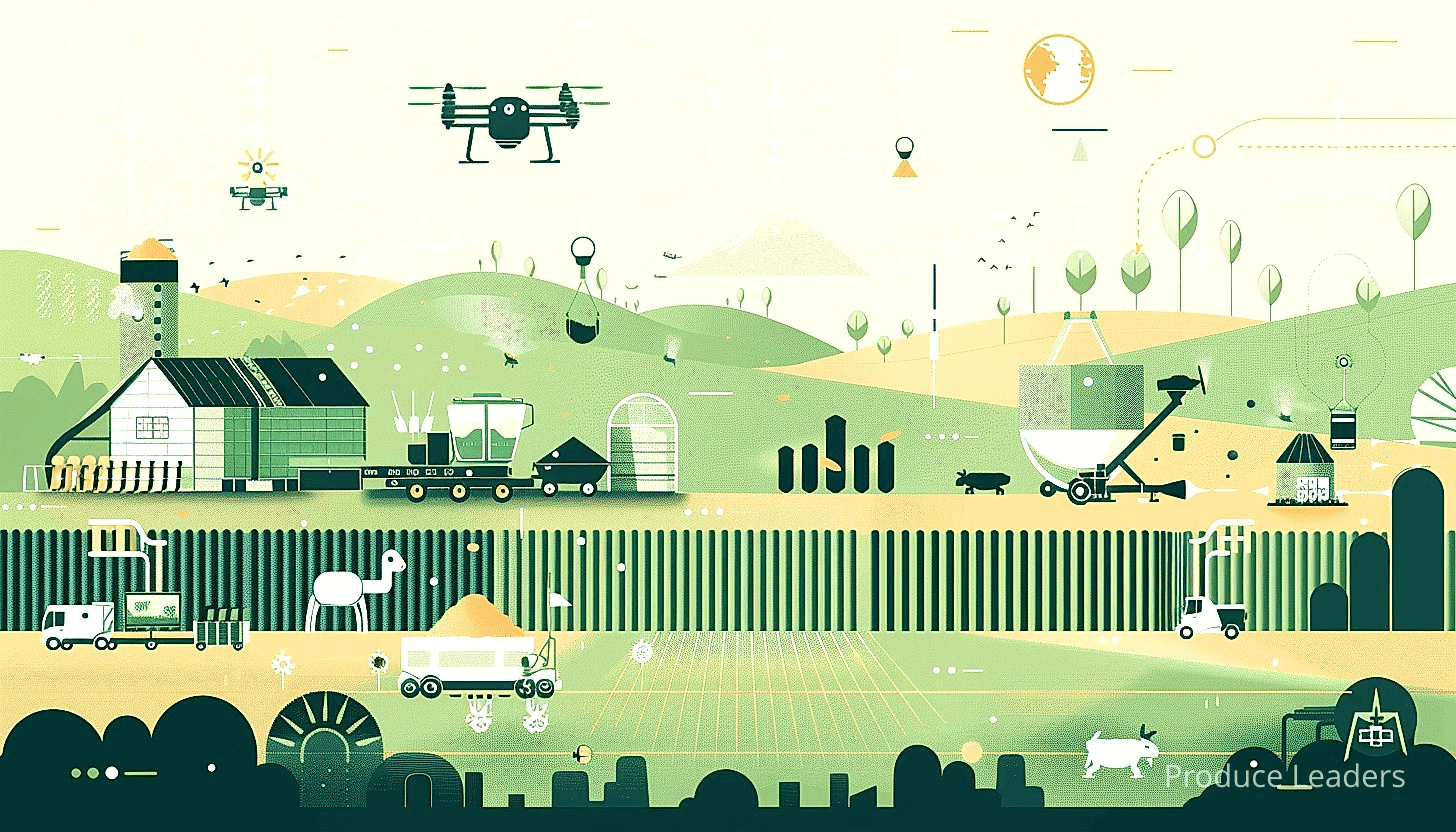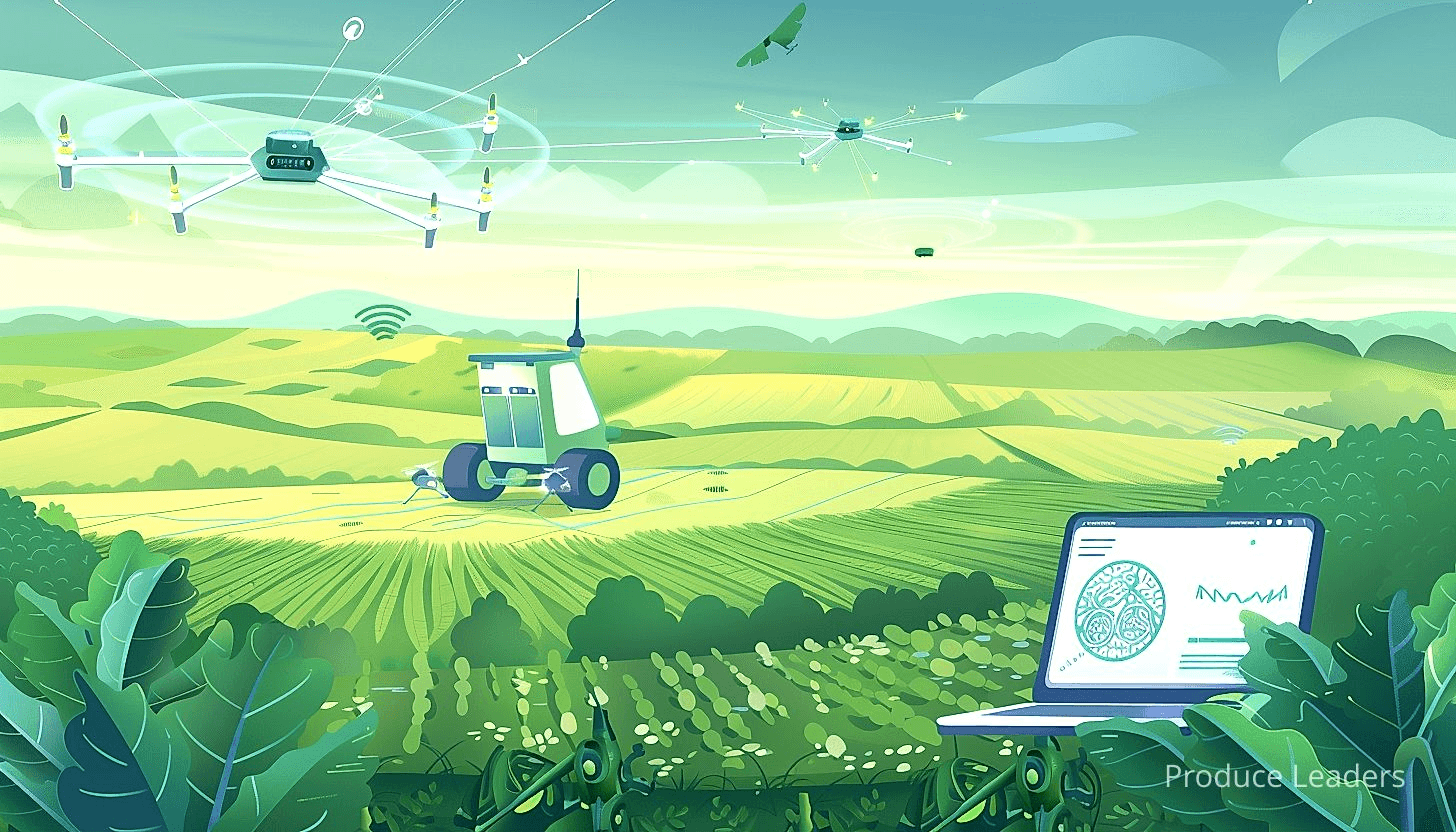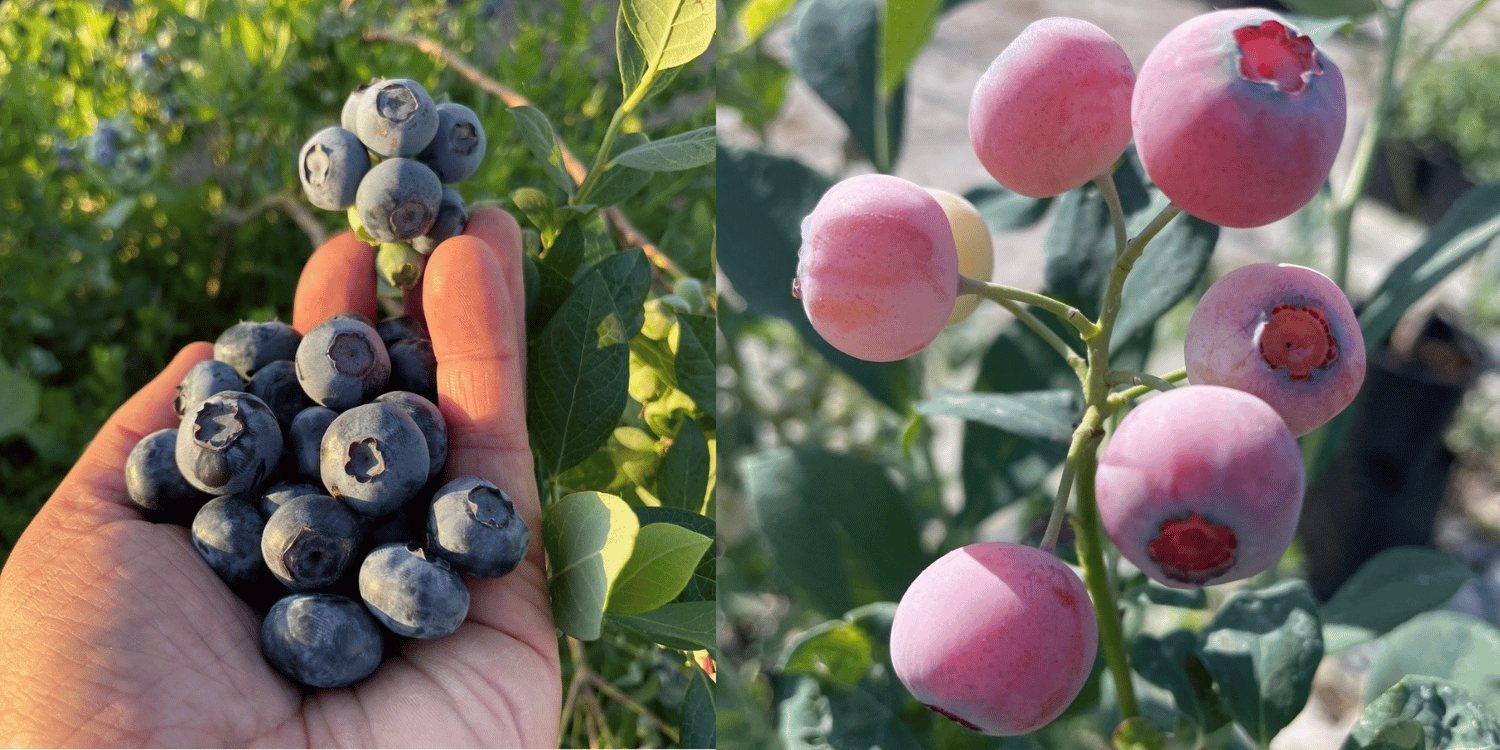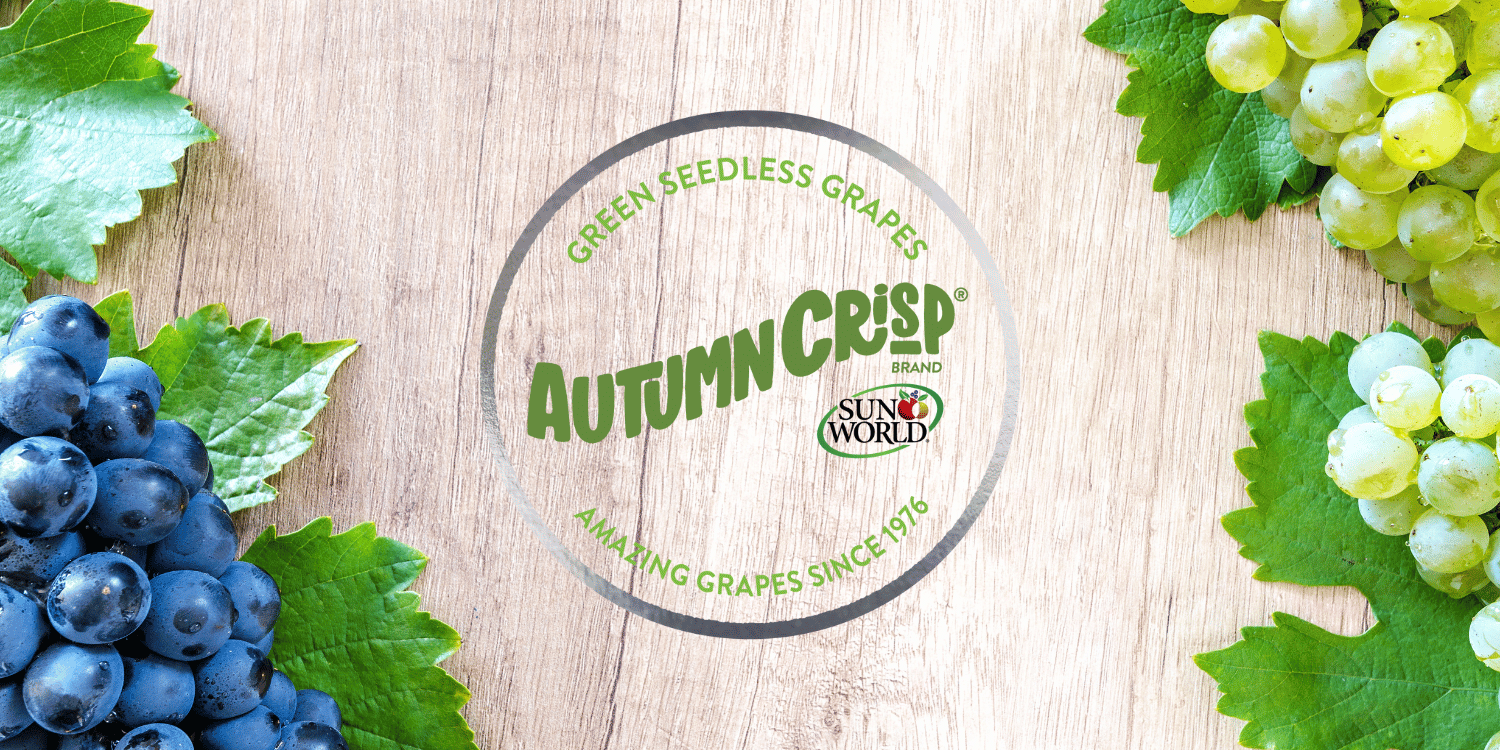Agricultural practices are undergoing a revolution.
Advanced technologies, such as Artificial Intelligence (AI), are being utilized to optimize yields and maintain sustainability.
Precision Agriculture, the method of farming that makes use of AI and other digital technologies, is rapidly cultivating interest worldwide.
It comes with the promise of increased efficiencies, reduced costs, and improved crop health.
In this progressively digital age, understanding the applications of AI in farming is important.
This article aims to shed light on the ways AI is embedded within precision agriculture and how it is transforming the farming landscape.
- AI helps in crop and soil monitoring using drone technology.
- Predictive analytics utilize AI for precise weather pattern forecasting.
- Data analysis enhances livestock management through AI.
- Robotics powered by AI simplify and automate the planting process.
- Machine learning is leveraged to predict crop yields accurately.
As we progress further in this article, we will cover a variety of other important topics related to artificial intelligence’s impact on agriculture.
The upcoming sections will provide in-depth insights into how AI is transforming different aspects of modern farming and why this technological revolution is significant.
Stay with us to discover the benefits and challenges accompanying the use of AI in agriculture, including how artificial intelligence drives sustainability in farming.
This exploration will provide you greater understanding and context for the current and potential future applications of AI in the agricultural industry.
Contents
Ways Ai Is Used In Precision Agriculture
1. Crop and Soil Monitoring Using Drones
In Short: AI technology has revitalized agriculture, integrating drones as invaluable tools for farmers for crop and soil monitoring. Coupling drones and AI allows swift data collection, disease detection, and precise monitoring while reducing time, labor, and environmental impact, thus making agriculture more predictable and efficient.
The advent of AI technology in agriculture has revamped traditional farming methods, with the introduction of drones for crop and soil monitoring being a prominent innovation.
Drones have swiftly turned into invaluable tools for farmers, giving them a bird’s-eye view of their fields, something that was previously unattainable.
The combination of drones and AI allows for capturing and processing of vast amounts of data, creating rich insights about the land and crops.
These unmanned aerial vehicles collect data through sensors and cameras, which relay information on plant health, moisture content, and the presence of pests or diseases.
What’s noteworthy is that drones can do this while covering large areas in a relatively short amount of time, enhancing the scope and efficiency of crop and soil monitoring.
This invaluable data is then processed using AI algorithms to provide actionable insights.
Likewise, the advanced sensors attached to these drones can penetrate the surface of the ground, to provide information about the soil composition and detect subterranean problems that would otherwise go unnoticed.
These sensors provide readings on soil pH levels, organic matter content, and moisture levels, which are key to successful agriculture.
The use of drones for crop and soil monitoring drastically reduces the time and labor required to manually check crops and soil conditions.
In this regard, the following are some significant aspects of drone technology:
- Gathering detailed and accurate data: Drones can capture detailed images and readings, leading to more precise crop monitoring.
- Quick data collection: They reduce the amount of time required for data gathering, thereby speeding up agricultural processes.
- Eco-friendly: Drones are environmentally friendly as they do not emit harmful gases.
- Diagnostics and prevention: With the ability to detect diseases and pests, they serve as an excellent preventive measure.
These attributes ensure that drones armed with AI are an irreplaceable part of modern agriculture.
Furthermore, through pattern recognition, the AI can predict potential outbreaks or infestations.
It can also recommend the necessary course of action based on the analysed data, thereby assisting proactive measures instead of reactive ones.
The AI-powered drones’ ability to provide real-time data is crucial for precision agriculture, as it allows for immediate action and reduces the likelihood of widespread crop damage.
While technology can never completely replace the farmer’s intimate knowledge of his land, it can unquestionably augment it, making farming more predictable, efficient, and economically viable.
2. Predictive analytics for weather patterns
In Short: AI technologies like predictive analytics allow precise and timely forecasting of weather patterns, revolutionizing precision agriculture. The technology’s accurate predictions improve irrigation planning, pest control, crop yield, and risk mitigation, impacting all facets of farming from farm management systems to supply chain management.
Precision agriculture has made a significant leap forward with the use of AI technologies such as predictive analytics for forecasting weather patterns.
This technology uses complex algorithms and massive amounts of meteorological data to predict weather conditions precisely and in a timely manner.
The precision and timeliness of these weather forecasts are crucial as they allow farmers to make informed decisions about their farming operations.

These decisions could involve knowing when to plant, irrigate, and fertilize crops, or when to harvest.
The following list presents some benefits farmers can leverage from utilizing predictive analytics for weather patterns:
- Precise irrigation planning: By accurately predicting rainfall, farmers can efficiently manage their irrigation systems, conserving water and reducing cost
- Effective pest and disease control: Certain weather conditions may foster the spread of pests or diseases. Predictive analysis can alert farmers of such conditions in advance, enabling them to take preventative measures
- Improved crop yield: With the right weather conditions prediction, farmers can plan their activities optimally leading to increased crop yield
- Risk mitigation: Predicting extreme weather events can help farmers take necessary actions to mitigate potential losses
These applications highlight the importance of predictive analytics in precision agriculture.
However, the scope of its application is not limited to these areas.
Predictive analytics can also be employed in other areas of decision-making on the farm.
For instance, in farm management systems, analytics can help in tracking, predicting, and managing farm activities, optimizing resources, and planning for the future.
It can impact every facet of farming, from supply chain management to the manner in which the farm interacts with its environment.
The power of predictive analytics shines when it is integrated with other AI technologies in precision agriculture such as crop and soil monitoring using drones, livestock management through data analysis, using robotics for automated planting, and machine learning for crop yield prediction.
As we all know, by accurately predicting weather patterns and other crucial aspects, AI and predictive analytics provide farmers with actionable insights that significantly enhance their farming operations.
And as more advancements are made in the field of AI and Big Data, it is anticipated that predictive analytics will become even more integral to precision agriculture.
3. Livestock Management Through Data Analysis
In Short: Livestock management through data analysis, as part of precision agriculture, leverages artificial intelligence (AI) to track and analyze animal data for enhanced productivity and sustainability. Despite challenges, the proper utilization of AI presents opportunities for more sustainable and efficient farming, potentially launching a new agricultural revolution.
Under the expansive umbrella of precision agriculture, livestock management through data analysis is a key area of growing prominence.
Livestock represents a significant economic pillar in agriculture, thus, applying intelligence and data analytics can tremendously boost productivity and sustainability.
The advent of sophisticated technology, including artificial intelligence, has paved the way for a more effective and efficient approach to livestock management.
In recent years, increasingly advanced AI tools have been developed with the capability of tracking, recording, and analyzing animal data.
From simple information such as weight and age, to complex behavioural patterns and health conditions, these data points contribute to a comprehensive profile of each animal.
The immense volume of data collected can unearth valuable insights about the herd, which, when leveraged appropriately, can enhance the overall livestock management process.
Let’s dig in a bit deeper into the specific applications:
- Health Monitoring: Farmers have access to real-time health metrics of each animal to detect any signs of disease or irregularities early.
- Growth Tracking: Artificial intelligence can help predict the growth patterns of livestock using past and present data trends, thereby aiding in forecasting and planning.
- Behaviour Analysis: AI-powered tools can recognize changes in behavior that could indicate stress, discomfort, or potential health issues.
Despite its notable benefits, successful implementation of AI in livestock management depends on a myriad of factors.
Having high-quality, reliable data is paramount for accurate analysis and interpretation.
Additionally, fostering a digital mindset and investing in the right technical skills are crucial for seamless technology adoption.
Furthermore, ethical considerations pertaining to data privacy and animal welfare must be factored in while adopting such technologies.
This highlights the necessity for stringent regulations and strict adherence to ethical guidelines in order to ensure both the technology’s success and its ethical soundness.
While the road to complete digitization may seem daunting, it’s important to recognize that AI and data analytics are not intended to replace the traditional methods, but rather to augment and enhance them.
The blend of traditional wisdom and contemporary technology can lead to well-informed decisions, improving the profitability and sustainability of farming operations.
AI’s role in precision agriculture, specifically in livestock management, goes beyond mere cost savings.
It has opened up possibilities for a more sustainable and efficient farming industry, paving the path for the next agricultural revolution.
Therefore, harnessing the power of artificial intelligence in livestock management holds immense potential not only for individual businesses, but for the agricultural sector as a whole.
4. Using Robotics for Automated Planting
In Short: Robotics and AI are revolutionizing the agricultural industry by automating planting processes, thus boosting efficiency, productivity, and cost-saving. These advanced technologies enable precise seeding, plant health monitoring, transplanting, and harvesting, leading to better field utilization and higher crop yields.
The concept of utilizing robotics for automated planting in the agriculture industry is not new, yet it is becoming more prominent with advancements in Artificial Intelligence (AI).
Automatic planters driven by AI allow farmers to optimize crop planting, thereby increasing efficiency and in turn, productivity.
The farming industry is experiencing a technological revolution, where robotic machinery is replacing traditional farming practices.

Earlier, planting process used to be manually handled by humans, however, it has been transitioning into a more technologically advanced procedure with the incorporation of AI into the agricultural industry.
Now, let’s touch on the various ways robotics is being used for automated planting:
- Seeding: Robots can perform large scale seeding operations accurately and in less time.
- Plant health: With the help of AI, robots can monitor the health of plants and perform necessary actions.
- Transplanting: Robotics can help in the transplantation of well-grown plants to larger fields.
- Harvesting: Robots can identify ripe crops and execute the harvesting process.
The major advantage is that it spares agriculturists the laborious task of planting, and provides a more efficient and less strenuous method of maintaining crops.
AI-driven robots can operate continuously without fatigue, thus leading to higher productivity and significant cost-saving.
Moreover, these AI machines can be programmed to plant specific seeds at precise depths and locations.
This precision helps in planting crops in the most efficient pattern, ensuring that each plant gets optimum sunshine and nutrients.
Not only does this increase yield, but it also facilitates better utilization of the field area.
Automated planting by robotics under the guidance of AI is paving the way for a more productive and efficient agricultural industry.
This application of AI in precision agriculture continues to prove its incredible potential in revolutionizing the future of farming.
Pro Tip: Robotic machinery, driven by advancements in Artificial Intelligence, is increasingly being used for automated planting in agriculture, significantly increasing efficiency and productivity by performing tasks like seeding, monitoring plant health, transplanting, and harvesting.
As new technologies continue to emerge, the future of automated planting and other agricultural practices driven by AI is truly inspiring.
The possibilities are virtually limitless with the integration of AI and robotics into the agricultural sphere.
5. Utilizing machine learning for crop yield prediction
In Short: Machine learning, a facet of AI, is revolutionizing agriculture by enabling precise crop yield prediction. By analyzing historical data, these algorithms enable farmers to plan effectively, optimize resources, manage risks, and enhance market strategies, leading to unprecedented sustainability, productivity, and profitability in farming.
When discussing precision agriculture, the application of machine learning to forecast crop yields is one area that cannot be side-stepped.
Machine learning, as an aspect of artificial intelligence, has an increasing significance in the agriculture sector, primarily so in crop yield prediction.
This technological advancement helps farmers make data-driven decisions, aimed at maximizing crop yield and minimizing losses.
The ability of machine learning algorithms to accurately predict crop yields based on a variety of factors is nothing short of revolutionary.
This application of AI goes a long way in enhancing the efficiency and predictability of agricultural operations.
Primarily, machine learning models are trained on historical data such as past yield amounts, weather patterns, soil composition, among other relevant factors.
With such critical information, these algorithms can predict crop yields with impressive accuracy, thereby allowing farmers to plan accordingly.
To appreciate how machine learning impacts crop yield prediction, it is crucial to understand some of the key areas it addresses:
- Seasonal Planning and Decision Making: Predicting the expected yield helps farmers plan their planting seasons more effectively. It helps in making decisions regarding the crops to grow, the most suitable plantation time, and the best fertilization methods to employ.
- Resource Optimization: Accurate crop yield predictions mean that farmers can optimize the use of resources such as water, fertilizer, and labor, thereby saving costs.
- Risk Management: Machine learning helps to foretell potential crop failures or diseases, allowing for proper risk management and mitigation against losses.
- Market Planning: With prior knowledge of the expected yield, farmers can strategize their marketing plans, pricing strategies, and sales channels, which enhances profitability.
It’s important to note, however, that the success of machine learning in crop yield prediction largely depends on the quality of data fed into the algorithm.
Garbage in, garbage out – Poor data will almost inevitably result in poor predictions. Therefore, proper data collection and management are the hallmarks of successful machine learning in crop yield prediction.
It is, therefore, no surprise that alongside machine learning, precision agriculture also greatly emphasizes on technologies such as IoT sensors for data collection, and data analytics for data management.
Pro Tip: Utilize machine learning in agriculture to make data-driven decisions and maximize crop yield, as its ability to predict yields based on historical and environmental data can enhance your operational efficiency, optimize resource use, and lead to better risk and market planning.
With the continuous improvement and accessibility of technology, it’s safe to presume that the impact of machine learning in agriculture, particularly in crop yield prediction, remains a compelling area of growth.
Indeed, the blend of artificial intelligence and agriculture proves to be a turning point in creating sustainable farming systems, and driving the agricultural sector towards unmatched productivity and profitability.
The Bottom Line
AI has indeed transformed the agricultural industry with its precision farming methods. Innovations such as predictive analytics, robotics, machine learning, and drones are fostering crop health, increasing productivity and reducing environmental impact. These advancements not only hold the promise for a more sustainable future but also address the pressing issue of global food security. Therefore, incorporating AI into agriculture is not just a novel trend, but an imperative for a thriving and secure food production system. The potential of AI in agriculture, though already significant, is vast and filled with exciting prospects for the future.
It’s important to note, however, that the success of machine learning in crop yield prediction largely depends on the quality of data fed into the algorithm.
Garbage in, garbage out – Poor data will almost inevitably result in poor predictions. Therefore, proper data collection and management are the hallmarks of successful machine learning in crop yield prediction.
It is, therefore, no surprise that alongside machine learning, precision agriculture also greatly emphasizes on technologies such as IoT sensors for data collection, and data analytics for data management.
Pro Tip: Utilize machine learning in agriculture to make data-driven decisions and maximize crop yield, as its ability to predict yields based on historical and environmental data can enhance your operational efficiency, optimize resource use, and lead to better risk and market planning.
With the continuous improvement and accessibility of technology, it’s safe to presume that the impact of machine learning in agriculture, particularly in crop yield prediction, remains a compelling area of growth.
Indeed, the blend of artificial intelligence and agriculture proves to be a turning point in creating sustainable farming systems, and driving the agricultural sector towards unmatched productivity and profitability.
The Bottom Line
AI has indeed transformed the agricultural industry with its precision farming methods. Innovations such as predictive analytics, robotics, machine learning, and drones are fostering crop health, increasing productivity and reducing environmental impact. These advancements not only hold the promise for a more sustainable future but also address the pressing issue of global food security. Therefore, incorporating AI into agriculture is not just a novel trend, but an imperative for a thriving and secure food production system. The potential of AI in agriculture, though already significant, is vast and filled with exciting prospects for the future.




















